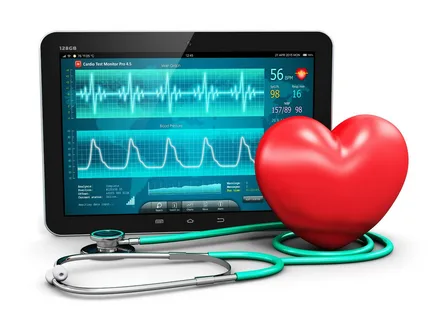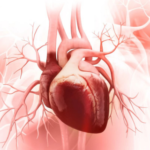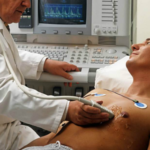
In the realm of cardiovascular medicine, accurate diagnosis forms the cornerstone of effective treatment. Among the array of diagnostic tools available, Electrocardiography (ECG), Two-dimensional Echocardiography (2D Echo), and Color Doppler imaging play pivotal roles in elucidating cardiac abnormalities and guiding clinical management. In this comprehensive exploration, we delve into the significance of these diagnostic modalities, shedding light on their indispensable contributions to cardiovascular diagnosis and patient care.
Electrocardiography (ECG):
ECG stands as a fundamental tool in the assessment of cardiac health, providing valuable insights into the electrical activity of the heart. By recording the heart’s electrical signals, ECG aids in the detection of various cardiac arrhythmias, conduction abnormalities, and ischemic changes. The diagnostic utility of ECG extends across a spectrum of cardiovascular conditions, making it an essential component of routine clinical practice.
- Detection of Arrhythmias: ECG serves as a frontline tool in the identification and characterization of cardiac arrhythmias, including atrial fibrillation, ventricular tachycardia, and bradyarrhythmias. By analyzing the waveform patterns and intervals, clinicians can accurately diagnose arrhythmic disorders, guiding appropriate treatment strategies to restore cardiac rhythm and prevent adverse events.
- Assessment of Ischemic Changes: Ischemic changes, indicative of inadequate blood supply to the heart muscle, manifest as specific ECG abnormalities such as ST-segment elevation or depression, T-wave inversions, and Q-wave development. These findings aid in the diagnosis of acute coronary syndromes (ACS), guiding timely interventions to mitigate myocardial damage and restore perfusion.
- Evaluation of Conduction Abnormalities: ECG enables the identification of conduction abnormalities, including atrioventricular (AV) blocks, bundle branch blocks, and fascicular blocks. These findings provide valuable insights into the integrity of the cardiac conduction system, facilitating risk stratification and therapeutic decision-making in patients with conduction disorders.
Two-dimensional Echocardiography (2D Echo):
2D Echo represents a cornerstone in non-invasive cardiac imaging, offering detailed anatomical and functional assessment of the heart in real-time. Through high-frequency sound waves, 2D Echo provides dynamic visualization of cardiac structures, myocardial function, and blood flow patterns, revolutionizing the diagnosis and management of various cardiovascular disorders.
- Assessment of Cardiac Structure and Function: 2D Echo enables comprehensive evaluation of cardiac chambers, valves, and myocardium, facilitating the detection of structural abnormalities such as ventricular hypertrophy, valve stenosis or regurgitation, and intracardiac masses. Additionally, assessment of ventricular function, including ejection fraction and wall motion abnormalities, aids in risk stratification and prognostication in patients with heart failure and other cardiomyopathies.
- Diagnosis of Valvular Heart Disease: 2D Echo plays a pivotal role in the diagnosis and characterization of valvular heart disease, allowing for accurate assessment of valve morphology, mobility, and function. Doppler imaging complements 2D Echo by providing quantitative assessment of valvular regurgitation or stenosis, guiding therapeutic interventions such as valve repair or replacement.
- Evaluation of Hemodynamics and Blood Flow: Color Doppler imaging, integrated into 2D Echo, facilitates visualization of blood flow patterns and velocities within the cardiac chambers and great vessels. This enables the assessment of intracardiac shunts, valvular regurgitation, and pulmonary hypertension, providing critical information for clinical decision-making and procedural planning.
Color Doppler Imaging:
Color Doppler imaging represents a cornerstone in the assessment of blood flow dynamics within the cardiovascular system, offering valuable insights into hemodynamics and vascular pathology. By applying the principles of Doppler ultrasound, Color Doppler imaging enhances the visualization of blood flow patterns and velocities, augmenting the diagnostic capabilities of cardiac imaging modalities.
- Quantitative Assessment of Blood Flow: Color Doppler imaging enables quantitative assessment of blood flow velocities, directionality, and turbulence within the cardiac chambers, valves, and great vessels. This information aids in the diagnosis of various hemodynamic abnormalities, including stenotic lesions, shunts, and intracardiac flow disturbances.
- Detection of Valvular Regurgitation: Color Doppler imaging serves as a sensitive tool for the detection and characterization of valvular regurgitation, allowing for qualitative and quantitative assessment of regurgitant jets. By evaluating the extent and severity of valvular insufficiency, Color Doppler imaging guides therapeutic decision-making and monitoring of valvular heart disease.
- Assessment of Vascular Pathology: Beyond cardiac applications, Color Doppler imaging extends to the assessment of vascular pathology, including peripheral artery disease, venous thrombosis, and arterial aneurysms. By visualizing blood flow patterns and detecting abnormalities such as stenoses or occlusions, Color Doppler imaging facilitates the diagnosis and management of vascular disorders.
Dr. Rahul Gupta and Cardium’s Contribution:
At the forefront of cardiovascular care in India is Dr. Rahul Gupta, a renowned cardiologist committed to excellence in patient care and medical innovation. Dr. Gupta’s expertise in non-invasive cardiac imaging, including 2D Echo and Color Doppler, has been instrumental in advancing diagnostic capabilities and improving patient outcomes.
Cardium (https://www.cardium.in/), under Dr. Gupta’s leadership, offers state-of-the-art facilities for comprehensive cardiovascular evaluation, including ECG, 2D Echo, and Color Doppler imaging. By leveraging advanced imaging technologies and a multidisciplinary approach to patient care, Cardium strives to deliver personalized, evidence-based management strategies for patients with cardiovascular conditions.
Conclusion:
In conclusion, Electrocardiography (ECG), Two-dimensional Echocardiography (2D Echo), and Color Doppler imaging represent indispensable tools in the diagnosis and management of cardiovascular disorders. From the detection of arrhythmias and ischemic changes with ECG to the comprehensive assessment of cardiac structure and function with 2D Echo, and the visualization of blood flow dynamics with Color Doppler imaging, these diagnostic modalities play complementary roles in elucidating cardiac pathology and guiding clinical decision-making.
Dr. Rahul Gupta’s expertise and Cardium’s commitment to excellence underscore their collective efforts in advancing cardiovascular diagnosis and patient care. By harnessing the capabilities of ECG, 2D Echo, and Color Doppler imaging, clinicians can enhance diagnostic accuracy, optimize treatment strategies, and ultimately improve outcomes for patients with cardiovascular diseases.




